Over the past couple of weeks, the Microsoft Flight Simulator team has hosted some live streams dedicated to showcasing some of MSFS2024’s default aircraft and some of the new features available to developers in the SDK and the marketplace. The aircraft showcase stream focused on what are perhaps some of the most anticipated aircraft in the new simulator, the iniBuilds Airbuses, which include the A330 and A321LR, among others.
iniBuilds Aircraft
Airbus A330
iniBuilds showcased just one of several A330 variants that will be included by default in the new sim. These variants include the passenger and cargo variants and both the General Electric and Rolls Royce engine options of the A330-200 and the A330-300.

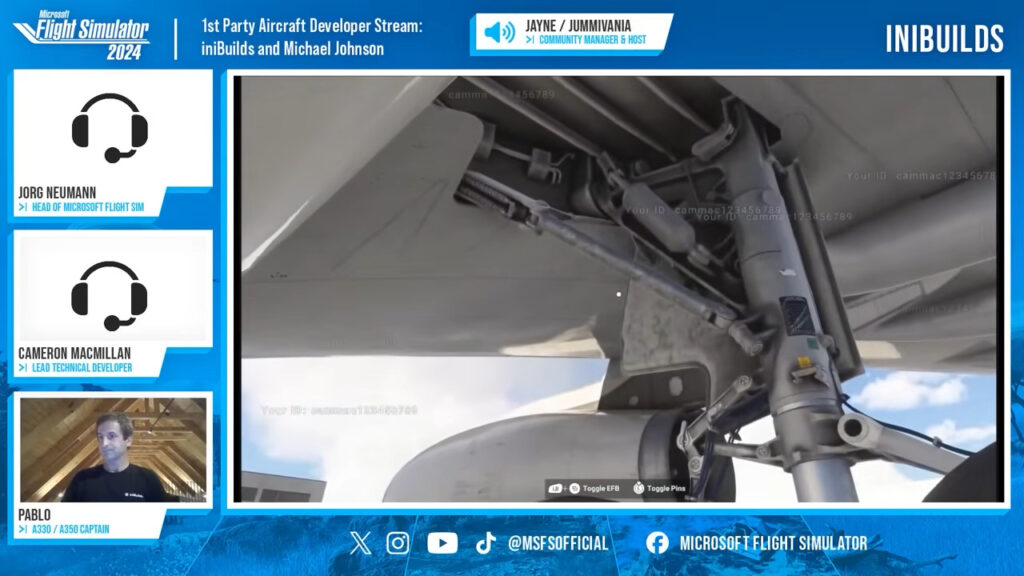


Pablo, a real-life A330 and A350 pilot, began the presentation by talking a bit about the feel of the A330. Comparing it to the A320 that many simmers will be familiar with, he remarks that with the A330 you can really feel the extra weight of the bigger aircraft, requiring more control inputs and finesse to land smoothly.




The rest of the presentation focused on showing off the extremely detailed exterior and interior models, which even feature a fully modeled cabin. The systems were also showcased, highlighting some of the A330-specific features that those familiar with the A320 may not know about, such as climb derates and the inclusion of the APU battery.
Airbus A330 Beluga XL
The A330 Beluga XL, though also being an A330, has some very big and also some small differences. On the exterior, of course, the biggest difference is evident, as the massive cargo bay can be seen. Some other exterior differences include the extra stabilizers on the elevators and the much lower cockpit position compared to the regular A330. To complete the Beluga experience, iniBuilds has also included a fully animated cargo loading vehicle.





The cockpit differences between the regular A330 and the Beluga are smaller. These include the absence of center tanks and some slight differences in the systems pages, especially for the doors page. The rest of the interior model features the galley section and access to the upper cargo bay.



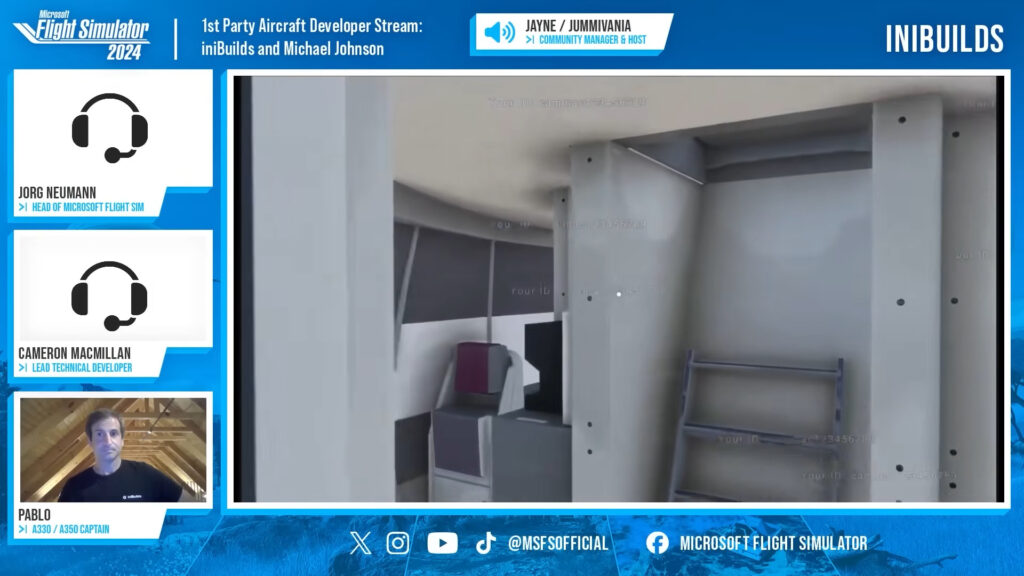
Airbus A321LR
The A321LR is much more similar to the A320neo that many simmers will be familiar with. iniBuilds’ version of the A321LR features the new DRAIMs, which are digital radio units. Some other differences between the A320neo are the inclusion of additional center tanks and a new fuel transfer system, as well as the expected differences in the flight model.

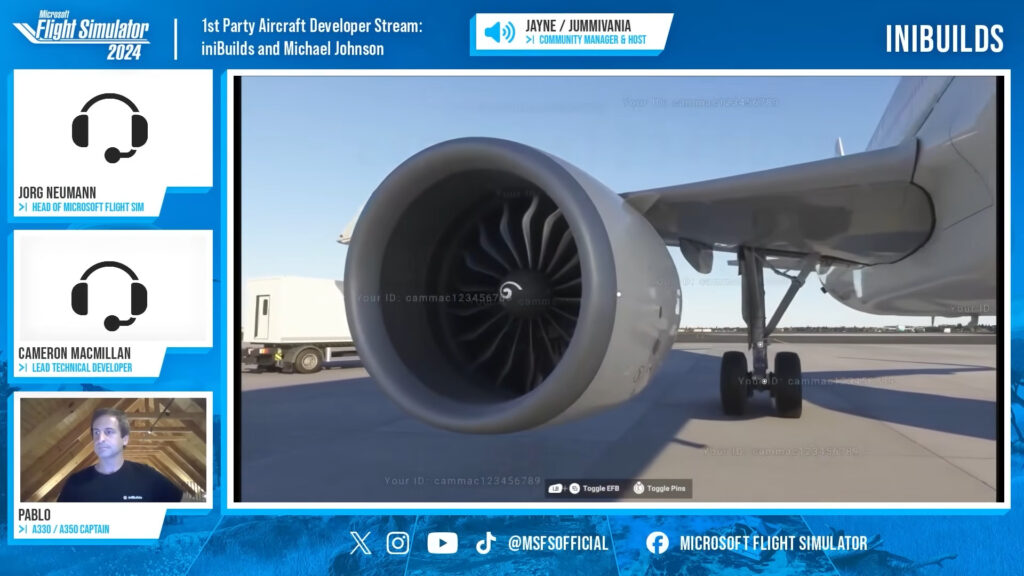


The exterior model features the same stunning level of detail we’ve seen with the other two aircraft. iniBuilds has taken some feedback from the community about the A320neo V2’s wings in MSFS2020 into consideration and has decided to remodel the wings from scratch for the A321LR. As with the other two aircraft, this one features a fully modeled and highly detailed cabin.
Airbus A400M Atlas
The A400M Atlas is a turboprop military transport plane manufactured by Airbus. Despite its military application, the fact that it’s manufactured by Airbus means that the systems and flight deck will feel very familiar to those who fly the manufacturer’s aircraft regularly. The displays and FCP look very similar to their civilian Airbus counterparts and the FMC is the same unit that is used in the A380 and A350.
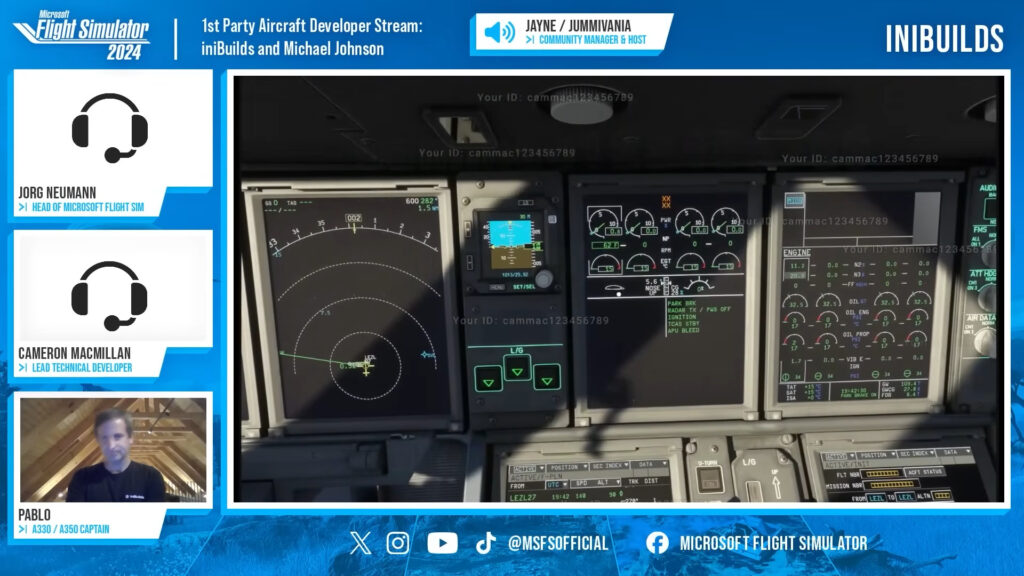




The exterior model features the A400M’s characteristic quad-turboprops and much of the same modeling quality seen in the previously-shown iniBuilds aircraft. The interior model features the cargo bay, which includes small details such as personnel seats and parachutes.




Mike Johnson’s Albatross G111/HU16
Michael Johnson, an independent developer working in collaboration with Microsoft, is responsible for MSFS2024’s Grumman HU16 Albatross and its modernized turboprop version, the Amphibian Aerospace G111. The Albatross was manufactured from 1949 to 1961 and was used for both military and private use alike.



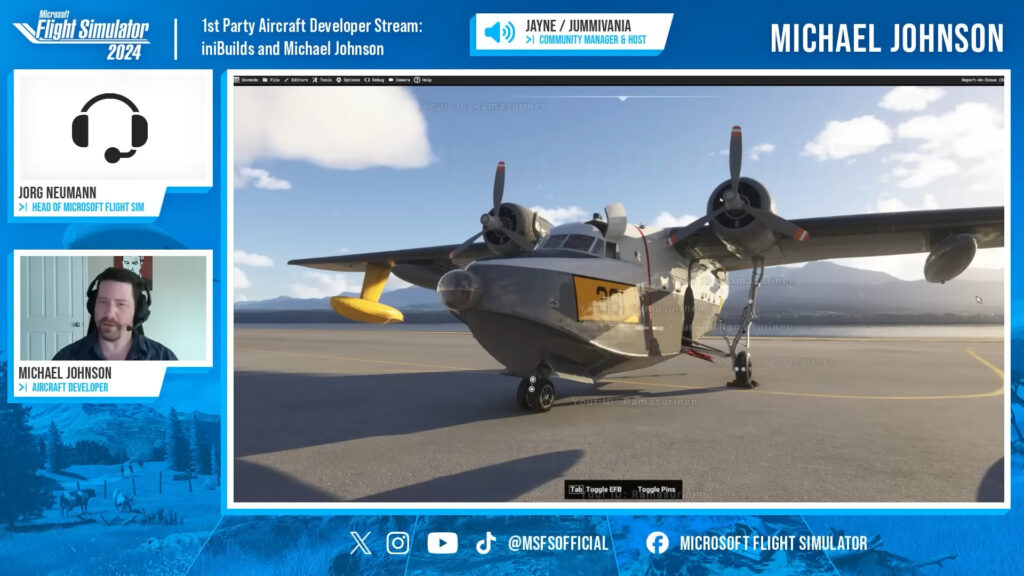
The interior and exterior models feature a high level of detail and are different depending on the version of the Albatross chosen. The older HU16 features good old radials for engines and the interior is very utilitarian, having only basic seats and tables; the cockpit features old-school steam gauges. The newer G111 has more modern turboprop engines and a luxurious interior with wood cabinets and big seats; the cockpit features the Garmin G1000 for its instruments.




MSFS2024 SDK and Marketplace Developer Stream
While the information provided in this stream was primarily relevant to developers, there were a few things mentioned that are relevant to regular users, mainly pertaining to MSFS2024’s new EFB and the MSFS marketplace pricing.
EFB
MSFS2024 will feature an EFB common across all aircraft that serves as a hub to access some important tools, such as the weight and balance, performance parameters, and flight plan information. The stream revealed that this EFB will be optional for developers to include in their cockpits, as it will always be available in 2D. It also revealed that the EFB will be available in two sizes, 8.3″ and 10.9″, and the orientation of it can be either portrait or landscape.


Another interesting feature mentioned on stream is the ability for developers to create their own EFB apps. Asobo will provide an API and template for developers to create custom apps that can be available either to all aircraft or only with specific aircraft. These apps can be published by the developers in the marketplace.
Marketplace
The marketplace presentation mainly focused on explaining the differences in posting content, the transition process for add-ons ported from MSFS2020 to MSFS2024, and an explanation of the new marketplace portal. This part of the presentation was quite similar to the FSExpo 2024 marketplace presentation, which you can read about here in case you’re curious.
The latter part of the marketplace presentation covered what users can expect from the MSFS2020 marketplace once the new sim is out. The MSFS2020 marketplace will continue to function as usual, with releases happening even during the MSFS2024 launch week.


Something else mentioned in this part of the marketplace presentation is the changes to the regional pricing of the marketplace. In short, pricing changes were made to remove competitive advantages presented by the differences in currency values and to fix weakening currencies such as the Brazilian real. What led to the weakening currencies change is that Microsoft pays developers in the USD value of their addons, which meant that Microsoft was losing money when people paid with these weakening currencies.
Closing Notes
The level of detail that can be seen in the default aircraft of the upcoming MSFS2024 is certainly exciting. While default aircraft in previous sims were mostly left to gather virtual dust while everyone used the higher-quality payware options, it’s likely that won’t be the case in the new sim, as the aircraft included appear to be at this already higher quality that is sure to satisfy many.
If you’d like to view the original streams, you can view the aircraft showcase stream here and the SDK/Marketplace stream here. Be sure to check out our MSFS2024 hub for more news on the upcoming sim!
Feel free to join our Discord server to share your feedback on the article, screenshots from your flights or just chat with the rest of the team and the community. Click here to join the server.










